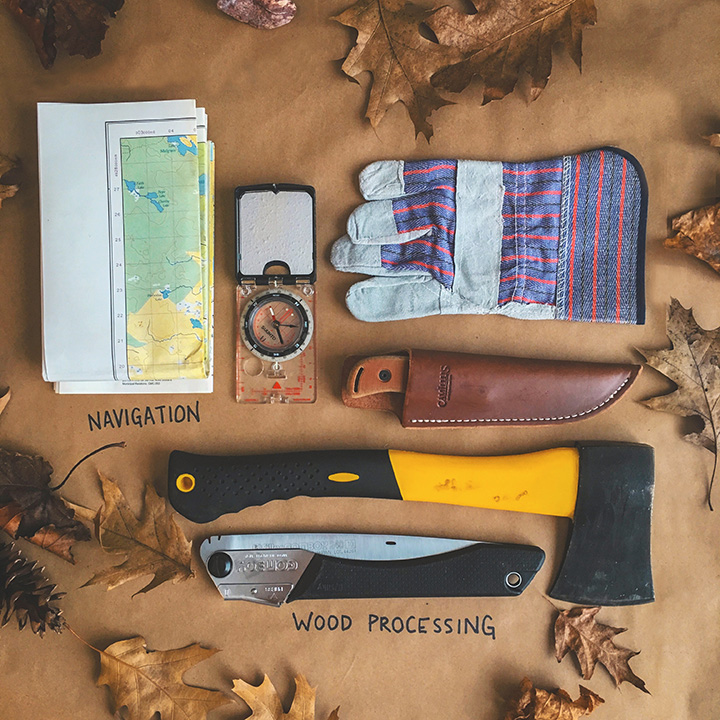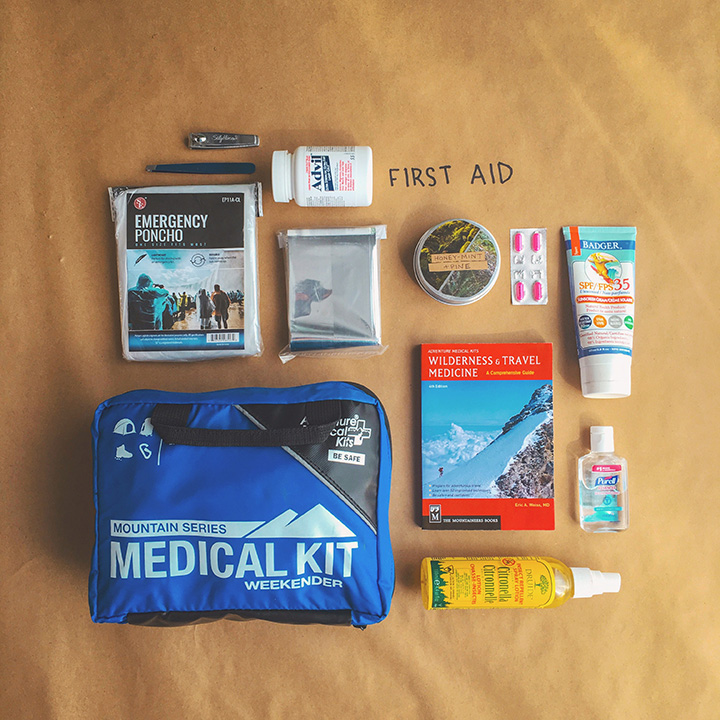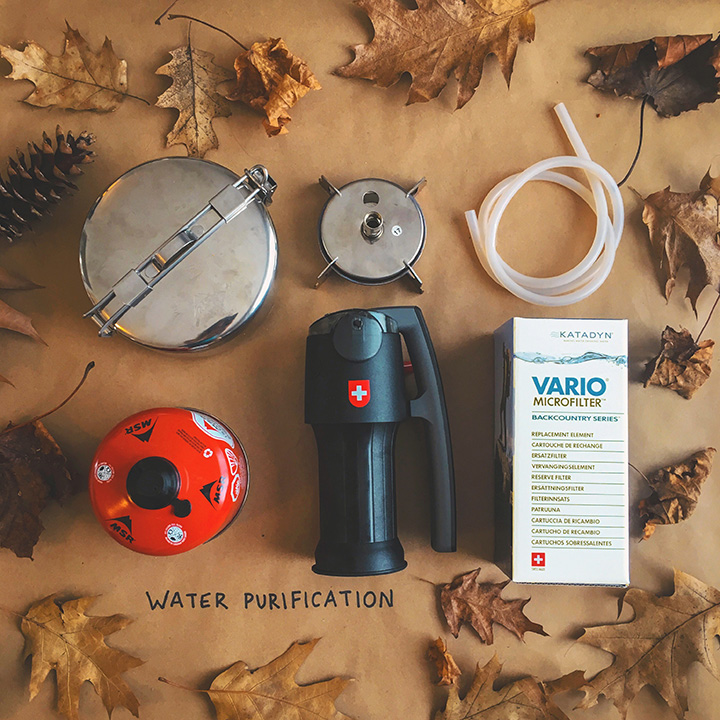This post overviews all the gear you need for a 3-day, 2-night backcountry camping trip. There are 8 categories covered; navigation, wood processing, water purification, first aid, sleep, fire, cooking, and miscellaneous.
1. Navigation
- Compass
- Map
Even when you are camping in familiar and well-marked backcountry, it is advisable that you carry a map and compass with you and familiarize yourself with how to use them. It is easy to find yourself turned around in the woods especially when you are hungry and tired.
2. Wood Processing
This section applies if you are planning on making a campfire. Regulations around fire making and wood collection vary from park to park. Some backcountry sites allow you to collect fallen deadwood and others strictly forbid it. Make sure to check-in with park officials ahead of time and respect wood collection and fire regulations.
- Saw
- Knife
- Gloves
- Axe (optional)
A saw and knife are sufficient for a small trip. Saws are good for processing deadwood and a good knife can baton wood into kindling and make tinder. A pair of gloves will help protect your hands from injury.
An axe is more useful for when you expect to be processing a lot of wood. If you do bring an axe, consider wearing protective glasses because it’s common for people to sustain eye injuries from flying pieces of wood.
3. Water Purification
- Water bottle
- Water purification system
Some form of water purification is needed for backcountry trips. There are lots of water purification systems on the market. I’ve been using the Vario system from Katadyn for years. It works great but it packs large and it’s a bit heavy. The Sawyer Squeeze is also a popular choice amongst backpackers. The Sawyer Squeeze packs small and is lightweight but less durable. Another option is water purification tablets. The downfall to these is you lose the ability to filter debris. You can also boil water. However, I advise against this as a primary method because it can only be done in designated fire pits and requires a great deal of time and effort.
4. First Aid
- Reflective blanket
- Poncho
- CPR face shield
- Irrigation syringe
- Bandages, wound closure strips, trauma pad, strapping tape
- Medications to treat pain, inflammation, and allergies
- Tweezers, sewing needle, and nail clippers
- Guide to wildness and travel medicine book
- Balm
- Sunscreen
- Bug spray
- Burn cream
- Hand sanitizer
- Latex gloves
- EMT shears
- Precision forceps
- Duct tape
- Moleskin
- Patient assessment forms and pencil
- Thermometer
- Safety pins
- Water purification tablets
Carrying a first aid kit and equipping yourself with first aid knowledge is important. Make sure to familiarize yourself with the contents of your kit and restock after each trip. Your first aid kit should be easily accessible and everyone camping with you should know where it is located. If you are hiking in an area with ticks bring tweezers and know how to protect yourself from tick-borne illnesses.
5. Sleep System
- Tent or tarp
- Sleeping pad
- Sleeping bag
It’s completely up to you whether you do tent or tarp camping – just make sure that you know how to set up whatever method you choose before heading out. The advantage of a tent is that it offers more shelter from wind, mosquitos, black flies, and other bugs.
Your sleeping bag should be rated for the temperatures you are going to be exposed to. The temperature rating can usually be found printed on the stuff sack.
A good sleeping pad will insulated you from the cold ground. The higher the “R-value” of a sleeping pad, the better insulated the pad will be. R-values can range from 1 (not very warm) to 10 (very warm).
6. Fire Starting
- Matches
- Lighter
- Firesteel (optional)
A lighter and matches are fine to start a fire, and a fire steel acts as a great waterproof backup. Carrying some light tinder, like cotton balls, can help you get a fire started fast.
7. Cooking
- Canister stove and fuel
- Dish for eating
- Spork
- Coffee drip
- Pot and/or frying pan
- Mug
- Biodegradable dish soap and sponge
A canister stove and fuel source are essential if you aren’t cooking by fire. As for cookware, carefully plan your meals ahead of time and bring as little as possible to make those meals. This will help keep your pack light and ensure you aren’t overpacking.
8. Miscellaneous
- Headlamp
- Sitting pad
- Multi-tool
- Toiletries
That’s it! Let me know in the comments section what your gear setup is and if you think I’ve missed an important item.





